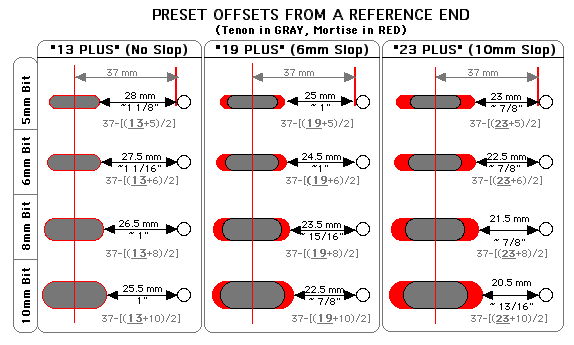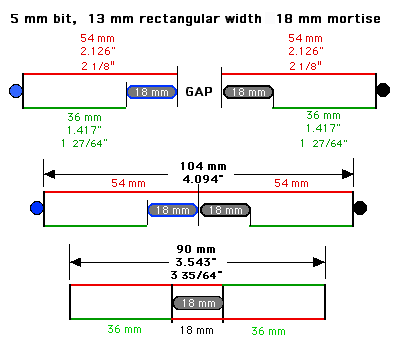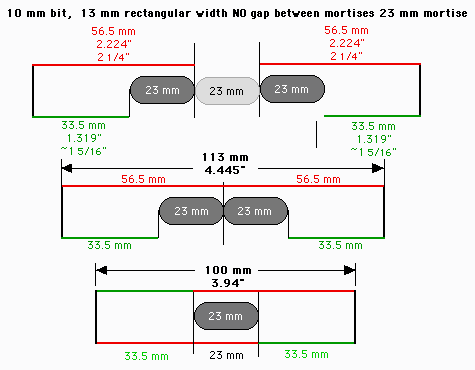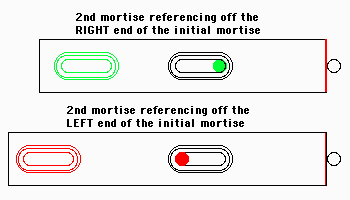The German Cabinet Making Industry loves standardization. Efficiency, in terms of mateial use as well as time, is VERY important - thus the "32-mm System" aka "System 32". "Americans", on the other hand, are relative anarchists -" STANDARDIZATION! I don't need no stinkin' STANDARDIZATION! I've got my own way of doin' things that works just fine. In fact, MY WAY works just as good - if not better. And my stuff is INDIVIDUALIZE. Hey, if even my wife likes the stuff I make I'm satisfied."
But I've digresses. Back to the Festool DOMINO.
Festool is a German company, and their market, until recently, was Europe. Though they are aggressively entering the American (U.SA.) market, their tools to date have been very much METRIC (1" = 25.4 mm, 1 mm = 0.0394", 1/32" = 0.0313" so think in terms of 32nds).
Given the German tendency for efficiency, and obsession with precision, I suspect that the "presets" on their tools have an underlying reason for them - probably having to do with the"32-mm System". SO - I've been looking for the underlying reasons for the Festool DOMINO "presets".
Why 5, 6, 8 and 10 mm diameter bits?
Why 13, 19 and 23 mm PLUS THE BIT DIAMETER for mortise widths?
Why 10, 16, 20, 22, 25, 36 and 40 mm offsets from a referene face to the centerline of the mortise?
Why the 45, 100 to 205 mm to the centerline of the long axis of the mortise?
Why 12, 15, 20 and 28 mm for the mortise depth of cut?
I understand the fence angle presets of 0, 22.5, 45, 67.5 and 90 degrees - but why the other presets?
Opened a spreadsheet and a psuedo CAD program and have been exploring the presets that control the mortise distance from an end using the retractable "stop pins" which are 45 mm from the center of the long axis of the mortise. Notice that the "13 plus" setting on the "width selector" gives you a nice snug fit for the tenon. BUT, if you want some "slop" in the mortise - well you can dial in 6 and 10 mm by turning the "width selector" to "19 plus" and "23 plus" respectively. Why would you want 1/4 to 1/2 of an inch slop? Ever "loose tenoned" a mitered corner? If the two mortises aren't "dead on" it not only is going to show, but will also mess up how the other end of both parts fit other things. Remember, errors ALWAYS accumulate - despite what statisticians tell you. Compensating errors are a myth - at least in my woodworking experience.

The 45 mm to mortise centerline from the retractable "stop pin" provides two more options to look into. You can use either end of the first mortise you cut to space to the centerline of the next mortise. Though the illustrations below show only the two options for the "45 mm" fixed "stop pins", You can get a pair of "accessory" offset attachments which will let you do the same thing anywhere from 100 to 205 mm (almost 4" to a tad over 8") - in 1 mm increments - that's 0.04 inch or 1/32nds increments. Count the number of tools in your shop that you can "automatically" set to that precision - without a special set up device - that didn't come with the tool.
With symetric Left and Right preset pin stops, you can position mortises from both sides of the part, so it begs the question - What's The Minimum Part Width for the the four "loose tenon" widths. The next two diagrams show the stock width options for the smallest and largest mortises.


